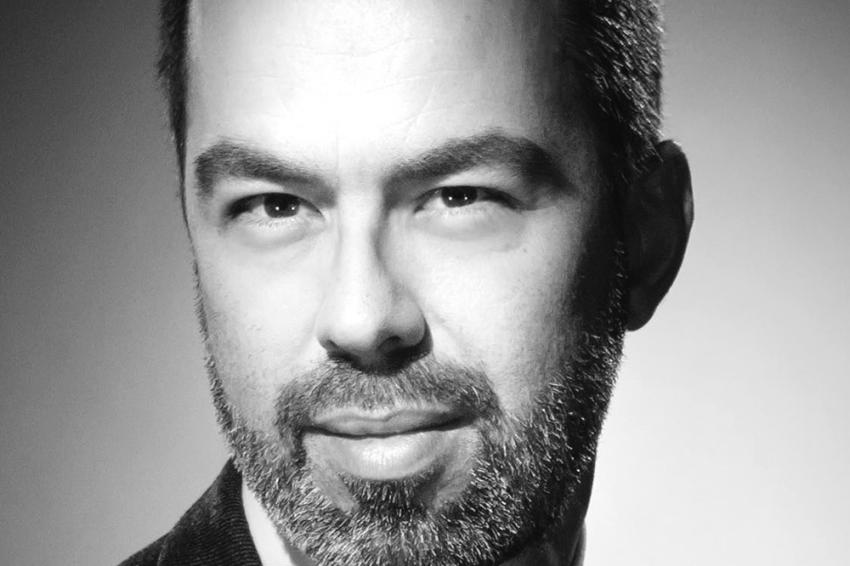Pharma: Adapting to an Ever-Changing Environment
Jean-Jacques (John) Mondoloni Talks on How the Pharma M&A Rush Is Shaking Up the CMO Industry
At Chemoutsourcing conference 2017, Jean-Jacques (John) Mondoloni, Managing Partner at Wombat Capital, chaired and moderated a round table on the topic “How Is The M&A Rush Shaking Up the CMO Industry?” This open question sparked a lively discussion about the trends and results of such consolidation. For CHEManager, he summarizes the key findings from shareholder and customer perspective. Michael Reubold also asked him to provide an outlook on how the industry consolidation may change the CMO landscape in the future.
CHEManager: Mr. Mondoloni, for more than a decade, M&A activity in the pharmaceutical industry has been at a high level. What are the major drivers of this industry consolidation? Have these drivers changed over time?
John Mondoloni: M&A activity in Pharma and the drivers of industry consolidation have evolved as companies have grown and adapted to an ever-changing environment. The cost of drug development, the length of time to get a product to approval, and stricter regulatory requirements have pushed pharma companies to pick their battles, with a focus on core expertise and acquisition - or divestiture - in complementary areas.
The drivers are diverse and vary based on the size of the company and its sector but include gaining access to critical size rapidly and reducing competition; accessing foreign markets, including emerging markets with exponential growth; entering new therapeutic areas and bringing next-generation technologies in-house. These drivers are the source of “horizontal” consolidation.
On the other hand, the need for efficient capital allocation has created a tremendous boost to the pharmaceutical outsourcing sector. Pharma companies are selling facilities to private equity firms or up-and-coming contract manufacturing organizations along with supply agreements. This results in the formation of new entrants and players becoming larger through consolidation. New segments of the pharma industry have flourished thanks to the reorganization of pharma companies.
M&A are one element of pharma companies to strengthen their position in the changing markets and create value. From a shareholder point of view, have most of the M&A transactions met the expectations?
J. Mondoloni: It is difficult to generalize or draw statistics and conclusions, as all transactions are different like all shareholders are, with different objectives, time horizon and expectations. A buyer acquires a target company to respond to a specific need at the time of the transaction. Responding to this need could potentially create value to shareholders over the long term or short term, could enable the company to maintain its competitiveness and not destroy value, or could result in a failed merger. In all situations, it is not the M&A transaction on its own, which creates or destroys value but rather it is the vision, the implementation of a strategy by a board or management, the understanding of the other side and the sharing of aligned objectives which leads to a successful or unsuccessful outcome.
Will the consolidation in the pharmaceutical industry level off or will it even intensify?
J. Mondoloni: With favorable economic conditions, strong capital markets, solid corporate profits, and low interest rates, the M&A sector is expected to continue to flourish. Consolidation in the pharmaceutical industry from a volume-of-deals point of view could slow down in certain sectors while continuing to grow in others. From a value point of view, I expect it to grow as players are becoming bigger. In pharma outsourcing for example, looking at the API sector, with all of the recent consolidations, there are fewer and fewer independent API manufacturers available, but the ones that have been acquired in the last few years could be part of another wave of consolidation of larger entities. The final-dosage-form manufacturing segment, which was, for a long time, part of the internal capabilities of pharmaceutical companies, is becoming a strong opportunity for growth in the CMO segment where we should see an uptick in terms of transactions.
For better/faster results in R&D, collaborative product development can be essential. And outsourcing of chemical syntheses is common practice. How can pharma companies and their CDMO/CMO partners make sure that collaboration remains effective during a merger or acquisition?
J. Mondoloni: As part of a merger and acquisition process it is critical to maintain confidentiality at every level, as all parties are concerned: the pharma client, who does not want its program to be revealed to any third party, and the seller, who wants to make sure that it remains protected against any market rumors which could affect its relationship with present and future customers, the dedication of its employees and the overall performance of the company. It is a sensitive subject where discussions should happen with the client to safeguard information, but where the seller is also looking to have the smallest number of parties gain knowledge of an impending transaction. Since the relationship with the pharma client was initiated based upon communication and trust, these are the bases to funnel collaborative efforts, avoid any disruptions and maintain confidentiality. The type of buyer could also influence the CMO-client relationship. A generic buyer acquiring a CMO to get additional capacity, particularly for its own pipeline, could create concerns of continuity of services, and confidentiality if the buyer is a competitor of the pharma client. Close communication is the source of success.
Does the consolidation in the pharma industry create a necessity for CDMOs/CMOs to consolidate? Do CDMOs/CMOs have to consolidate in order to stay in the game?
J. Mondoloni: Each industry or in this case segment of industry has its own drivers for consolidation. I don’t believe that the consolidation in the pharma industry will drive the consolidation of CDMOs/CMOs. In the highly fragmented contract services market, CMOs have to consolidate to stay relevant to the large pharma and specialty pharma companies. CMOs have already set themselves apart by becoming more integrated, offering unique technologies, efficiency, superior customer service and expertise on complex synthesis and manufacturing. They have also demonstrated that they have extended their geographic reach taking into account the global nature of the pharma industry but also to benefit from lower manufacturing costs, skills and specific know-how. Being larger enables the CMO to also apply more dedicated resources to quality, project management, capital expenditure, etc. to be able to remain competitive in a highly regulated environment.
In recent years, the top CMOs have been on an M&A splurge. What are the drivers and the predominant trends regarding the underlying geographical or technological strategies?
J. Mondoloni: CDMOs/CMOs have to consolidate to remain competitive. Consolidations in the CMO segment could lead to the set-up of a “one-stop-shop” model, being able to serve the client as the product goes through the various clinical trials, from discovery to commercial, while having complementary manufacturing capabilities from APIs to final dosage form. From a geographic point of view, CMOs from around the world are looking at the US market for acquisition, as it is the largest pharmaceutical market in the world. When a majority of foreign CMO customers are Americans, a foreign CMO needs to go beyond having just a sales office in the US by having its own R&D and manufacturing platform to reinforce its presence and its image. Extremely low interest rates in Europe have fueled recent cross-border transactions involving European players.
Which trends do you see changing the CMO industry in general?
J. Mondoloni: The growing focus on orphan drugs and targeted therapies has created a need for more nimble, responsive manufacturing capabilities and specialized expertise. This has led to the growing focus on high-value, low-volume APIs, leaving the manufacturing of more commoditized and large-volume APIs to manufacturers in India and China. Likewise, on the formulation front, with the development of a large number of oncology drugs and potent compounds, sterile manufacturing capabilities are expected to become one of the fastest growing segments. The smaller CMOs have to become more specialized, while the larger ones have to be more integrated, all driven by the substantial growth of the pharmaceutical sector as a whole as well as an increase in the amount of manufacturing work to be outsourced.
How can CDMOs/CMOs turn the challenges caused by consolidation into new business opportunities?
J. Mondoloni: While M&A can create challenges, it can also bring opportunities for the seller, the buyer as well as the client. Sellers’ employees often welcome a larger, more established company as a potential buyer, creating strong dynamism and energy. A buyer and seller combining their respective businesses enable the client to benefit from complementary expertise, additional capabilities and sometimes additional capacity as well. Business development professionals can cross-sell services or propose delocalization of manufacturing by marketing the facility of the parent company in other countries.
Today’s client is seeking more and more to forge strong and long-term partnerships with a very limited number of efficient, full-service providers. A larger entity could much more easily respond to such need and create a more sustainable, long-term, business opportunity.






